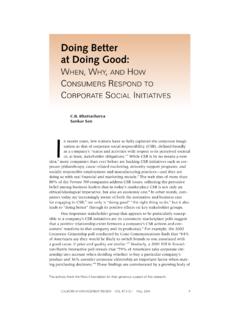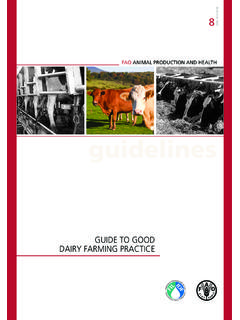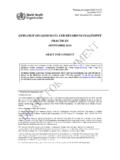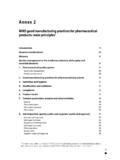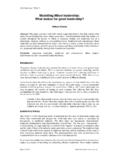Transcription of H elp in g C h ild ren T ak G R isk s
1 122 BEYOND SCHOOLHELPING CHILDREN TAKE good RISKSH elping Children Take good Risksby Nancy Eppler-Wolff and Susan Davis, clinical psychologistsDuring the first period of a man s life, the greatest danger is not to take the risk. Soren KierkegaardChallenges and bumps in the road are a reality of every child s life. Children try out new behaviors and have uncertain thoughts and feelings. Change and allowing one s self to be vulnerable can be frightening and difficult. And beyond everyday personal challenges, the current generation of children is living through tumultuous and frightening times. Our greater world feels so risky that even young children worry about issues such as terrorism, global warming and disease. Adolescents face more immediate hazards: Internet dangers, unsafe sexual behavior, over-consumption of al-cohol, and recreational drug use.
2 There are also the seemingly mundane issues that dot the landscape of middle childhood. For example, the third grader who won t speak up in class because he didn t understand last night s homework assignment, and is afraid to ask for the help he needs. This boy begins to avoid his teacher and his homework. Or consider the fifth grader who is desperate to impress his friends in the skateboard park and, in the process, becomes too much of a daredevil. Our children also experience the fierce competitiveness and the fast pace of the twenty-first century when they are young. From early grades, many teachers assign a lot of nightly homework. Here in New York City, the intense competition for admission to private schools, specialized public high schools and top colleges exacerbates the pressure that children and Should We Create a Safety Bubble?
3 With these issues, and others, looming in the background, parents want to insulate children from harm. In the pursuit of protecting our chil- 123 BEYOND SCHOOLHELPING CHILDREN TAKE good RISKS dren, we may over-protect them. We won t allow our children to walk to the neighborhood pizza place unaccompanied by an adult until they are well into middle school, or take public transportation until they are in high school. We equate small physical risks, such as skateboarding, with minor hazards. Many of us require our teenage children to check in, almost hourly, via cell phone. Further, in an effort to alleviate academic pressure, some parents be-come overly involved in their children s school work. We desperately want our children to succeed, and end up supervising homework assignments a little too closely, sometimes bordering on unintentionally doing the work for them.
4 It is natural to have anxieties, but when we act on them in this way, what is the cost to our children? With these messages from us, what are children learning about themselves and the world around them? And when we involve ourselves too heavily in their work, what message does it convey about their own responsibility and competence?Risk is Inevitable and ImportantRisks good and bad are inevitable from birth. Yet, many of us haven t given much thought to the ways in which risk unfolds. With a toddler s first step, he is taking the risk of stepping out into the world lit-erally and figuratively. When a preschooler enters his new class of teachers and children for the first time, he is taking the risks inherent in separating from the only caretakers he s known. Can he be okay on his own without Mommy there to keep him safe, he wonders?
5 A shy first grader who raises her hand in class to ask a question takes the risk of appearing stupid in front of her peers. She risks feeling embarrassed, or inadequate. Yet her raised hand allows her to take a risk that leads to feelings of self-assertion and self-expression. A third grader who has difficulty with math, but attempts to do his math homework himself, is taking the risk of feeling frustrated and incompetent. When he sits with it and endures his feelings, and does the assignment to the best of his ability, he will learn that tolerating frustra-tion leads to feelings of control and autonomy. An older child who, despite doubts, tries out for a school play, risks feeling embarrassed and incompe-tent, but strives toward achievement and the desire to express herself. The teenager who runs for student government leader is making himself vulner-able to scrutiny and potential criticism.
6 If he fails, he may feel unworthy. 124 BEYOND SCHOOLHELPING CHILDREN TAKE good RISKSIn trying to follow his desire to become a leader, however, he takes a smart risk, one that has the possibility of fulfilling his aspiration of being useful and successful. As parents, we have a fundamental responsibility not only to under-stand the inevitability of risk, but to know the importance of taking life s risks, small and large. Risk is part of development; thoughtful risk epito-mizes the forward thrust of human growth and change. Risk-taking is a key developmental concept, and parents need to understand its significance as a teaching experience for children. Through parents modeling, nurtur-ing and teaching good risk-taking skills, children will be better prepared to meet life s , What is a good Risk? A good risk is an action, activity or behavior that, precipitated by care-ful thought, involves a leap toward the edge of safety and danger.
7 Risk-taking, like other skills, needs to be learned and practiced over have identified four steps toward good risk taking. These are: 1. Identify the risk physical, emotional, social or intellectual, or a combination of factors. 2. Stay aware of the potential dangers, and benefits, of moving for- ward or staying still. 3. Think through one s actions. 4. Evaluate one s actions afterwards. If it is really important for our children to learn to take smart risks, what can we do to facilitate this behavior, and to minimize the taking of poor risks? Understand Your Child s TemperamentOur children come into this world with a unique biological make-up that manifests in temperament. Thus, for some children, taking risks comes more naturally than for others. Others are born with the capacity to stop, think, and weigh out options before acting but may need to learn how to go for the challenge.
8 Some children are more willing to talk about these matters with their parents than others. But any child can become a good risk-taker with practice. We parents also have our own temperament and an experience-shaped lens with which we view our children and their behavior. The fit between 125 BEYOND SCHOOLHELPING CHILDREN TAKE good RISKSus is a product of many factors, and it is our responsibility to understand our fit, and modify or make it work better if our temperaments clash. Over time, children develop a personality that is comprised of their tempera-ments, their experiences and their fit with us. They develop a learning style that they take with them into school and beyond. It is not an easy task, but it is our work to understand all this as well as we can. The Neuroscience of Risk-TakingAided by knowledge of child development, child psychology, education and the burgeoning field of neuroscience, we have the ability to help dif-ferent types of children become thoughtful and good risk-takers, no matter what their natural temperament or learning style.
9 We now know that experience affects the brain, and the brain affects experience. Recent advances in neuro-imaging techniques show that experi-ences of all kinds alter the circuitry of the brain. Early deprivation can limit cognitive and emotional po-tential, and positive, attuned stim-ulation enhances the individual s potential. Children are born with temperamental tendencies and spe-cific learning styles, and these can be modified over time through en-vironmental input. This includes the influence of parenting style, teaching, and other forms of example, a child who has the tendency for shorter span of atten-tion and impulsivity can through maturation and environmental input develop into an individual who can sustain longer and more focused attention and think through decisions that might otherwise throw him. How can this be accomplished?
10 The answer is a combination of thoughtful understanding of the child s scope of strengths and weaknesses by parents and educators. Importantly, the parent who understands her own expecta-tions and biases is better prepared to help her impulsive child learn to take well-thought-out challenges. A child with a more cautious temperament may be at an advantage when it comes to taking smart risks; however, sometimes this same child can be inhibited, and have difficulty with the action part. However, she If it is important for our children to learn to take smart risks, what can we do to facilitate this behavior? 126 BEYOND SCHOOLHELPING CHILDREN TAKE good RISKScan be helped by her parent (or other trusted adult) to step out of her comfort zone. This child must also practice good risk-taking: identifying problems and opportunities, thinking through and weighing options, and then evaluating success or failure.

